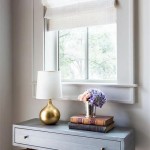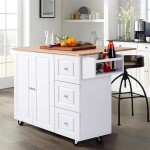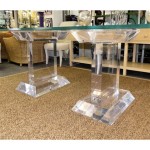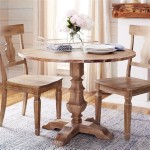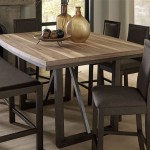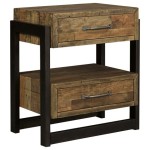The Endearing Comfort of the Chair and a Half
The chair and a half, a seating option that comfortably bridges the gap between a traditional armchair and a loveseat, has steadily gained popularity in residential and commercial spaces. Its generously proportioned design invites relaxation and offers a versatile solution for individuals seeking both personal comfort and the option to share seating with a small child or pet. Understanding the nuances of this furniture piece requires considering various factors related to its dimensions, construction, materials, and aesthetic styles. This article aims to provide an informative exploration of the chair and a half, highlighting its benefits, distinguishing features, and the considerations involved in selecting the most suitable model.
At its core, the chair and a half is defined by its wider-than-average seat. While precise dimensions can vary between manufacturers and specific designs, a typical chair and a half features a seat width ranging from 35 to 50 inches. This additional width distinguishes it from a standard armchair, which generally measures between 25 and 35 inches. The extra space allows an individual to lounge comfortably, curl up with a book, or even stretch out for a nap. Furthermore, it provides ample room for a parent and child to share the seat, making it a practical choice for families. The depth of the seat is also a critical factor, typically mirroring that of a standard armchair, falling within the range of 30 to 40 inches, ensuring adequate leg support and overall comfort.
The construction of a chair and a half significantly influences its durability and long-term comfort. The frame, usually crafted from hardwood such as oak or maple, provides the structural foundation. Kiln-dried hardwood is preferred as it minimizes the risk of warping or cracking due to changes in humidity. The joints of the frame should be securely fastened, often using a combination of screws, glue, and wooden dowels, to ensure stability and prevent wobbling. Suspension systems, such as sinuous springs or eight-way hand-tied springs, are crucial for distributing weight evenly and providing support. High-quality springs contribute to the chair's comfort level and prevent sagging over time. The cushioning material further contributes to the overall seating experience. Options include down feathers, foam, or a combination of both. Down provides a luxurious, plush feel, while foam offers greater resilience and support. High-density foam is recommended for its durability and resistance to compression.
Optimal Comfort and Ergonomic Support
Beyond its generous size, the chair and a half’s comfort is derived from several ergonomic factors. The backrest angle plays a pivotal role in supporting the lumbar region and promoting proper posture. A slightly reclined backrest, typically between 100 and 110 degrees, encourages relaxation without compromising spinal alignment. Armrests, strategically positioned at a comfortable height, provide support for the arms and shoulders, reducing strain and fatigue. The height of the armrests should allow the user to rest their arms naturally without hunching or straining. Lumbar support cushions, often included or available as accessories, can further enhance comfort by providing targeted support for the lower back, particularly beneficial for individuals who spend extended periods sitting.
The choice of upholstery material directly impacts the chair and a half's comfort and aesthetic appeal. Natural fibers, such as cotton, linen, and wool, are breathable and offer a soft, comfortable feel against the skin. However, they may be more susceptible to staining and wear. Synthetic fibers, such as polyester and microfiber, are more durable and stain-resistant, making them a practical choice for households with children or pets. Leather is a luxurious option that offers both durability and a distinctive aesthetic. It is important to consider the fabric's weave and texture, as these factors can influence its comfort and resistance to wear and tear. Tight weaves tend to be more durable, while looser weaves may be softer but more prone to snagging.
The maintenance of the chair and a half significantly contributes to its long-term comfort and appearance. Regular vacuuming helps remove dust and debris, preventing them from becoming embedded in the upholstery. Spot cleaning spills and stains promptly minimizes the risk of permanent damage. Professional upholstery cleaning is recommended periodically to remove accumulated dirt and grime and to refresh the fabric. Leather upholstery requires specialized cleaning and conditioning to maintain its suppleness and prevent cracking. Cushions should be regularly rotated and fluffed to ensure even wear and maintain their shape and support. Following the manufacturer's care instructions is crucial for preserving the chair's integrity and extending its lifespan.
Versatility in Design and Style
The chair and a half transcends simple functionality, serving as a statement piece that can enhance the aesthetic appeal of any room. Its versatility in design allows it to seamlessly integrate into a variety of interior styles, from traditional to contemporary. Traditional chair and a half designs often feature rolled arms, tufted backs, and ornate detailing, evoking a sense of classic elegance. These models are typically upholstered in rich fabrics such as velvet or brocade, and may incorporate decorative elements such as nailhead trim or carved wood accents. Contemporary chair and a half designs prioritize clean lines, minimalist silhouettes, and neutral colors, reflecting a modern aesthetic. These models are often upholstered in durable fabrics such as linen or microfiber, and may feature streamlined legs and simple geometric shapes.
Transitional chair and a half designs bridge the gap between traditional and contemporary styles, blending classic elements with modern sensibilities. These models may feature clean lines and simple silhouettes, but incorporate traditional details such as tufting or nailhead trim. The upholstery fabrics often combine natural textures with contemporary patterns, creating a harmonious balance. The choice of leg style can also influence the chair's overall aesthetic. Tapered legs lend a modern touch, while turned legs evoke a more traditional feel. Sleigh legs, characterized by their curved shape, add a touch of elegance and sophistication.
The color and pattern of the upholstery can significantly impact the chair and a half's visual appeal. Neutral colors, such as beige, gray, and white, are versatile and can easily complement a variety of decor styles. Bold colors, such as blue, green, or red, can add a pop of personality and create a focal point in the room. Patterned upholstery can introduce visual interest and texture, but it is important to consider the scale and complexity of the pattern in relation to the size of the chair and the overall aesthetic of the room. Small-scale patterns tend to be more subtle and versatile, while large-scale patterns can make a bolder statement.
Practical Considerations for Choosing a Chair and a Half
Before purchasing a chair and a half, it is essential to consider several practical factors to ensure that it meets the specific needs and preferences of the user. The size of the room is a primary consideration. A chair and a half, with its generous proportions, requires adequate space to avoid overwhelming the room. Measuring the available space and creating a floor plan can help determine the optimal size and placement of the chair. The chair's intended use should also influence the selection process. If the chair is primarily intended for lounging and relaxation, a model with a deep seat and a reclined backrest may be preferred. If the chair is intended for more formal seating, a model with a more upright backrest and firmer cushions may be more suitable.
The user's physical characteristics should also be taken into account. Individuals with longer legs may require a chair with a deeper seat, while individuals with back problems may benefit from a chair with enhanced lumbar support. The height of the armrests should be comfortable for the user's arm length, and the overall height of the chair should allow the user to easily sit down and stand up. Budget considerations are also important. Chair and a half prices can vary widely depending on the materials, construction, and brand. Establishing a budget beforehand can help narrow down the options and ensure that the purchase aligns with financial constraints. Comparing prices from different retailers and considering sales and promotions can help find the best value for the money.
Finally, it is crucial to read reviews and seek recommendations from other consumers before making a purchase. Online reviews can provide valuable insights into the chair's comfort, durability, and overall quality. Visiting a furniture store and testing out different models in person can also help assess their comfort and suitability. Asking friends or family members for recommendations based on their personal experiences can provide valuable information and help avoid potential pitfalls. Taking the time to research and carefully consider all of these factors can increase the likelihood of selecting a chair and a half that provides years of comfort and enjoyment.

West Elm Harmony Chair And A Half Review Christene Holder Home

The 20 Most Comfortable Reading Chairs Of 2024 Purewow

The 20 Most Comfortable Reading Chairs Of 2024 Purewow

The 10 Best Chair And A Half Accent Chairs To Buy In 2024

20 Most Comfortable Chairs For Lounging In 2024

Harmony Chair And A Half

The 20 Most Comfortable Reading Chairs Of 2024 Purewow

Most Comfortable Chair Ever A Roundup For Elliot S Room Emily Henderson

Armchair And Top A Half

The 20 Most Comfortable Reading Chairs Of 2024 Purewow

